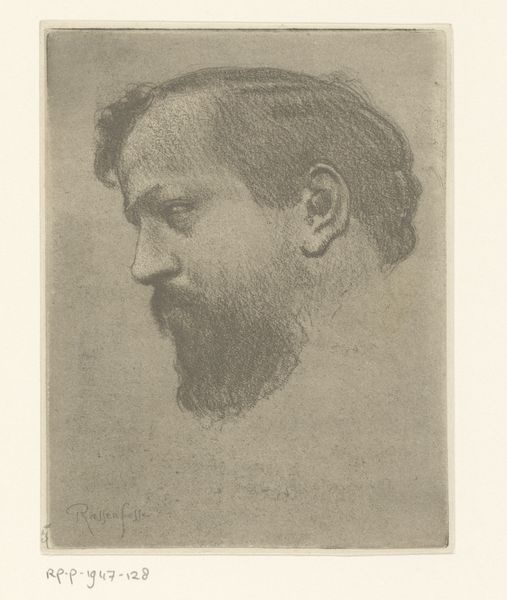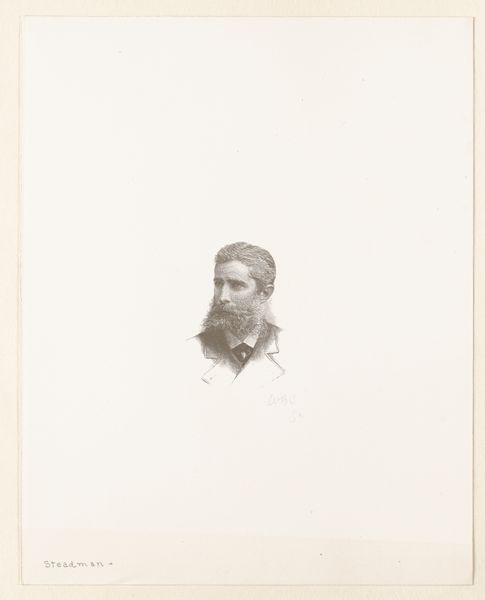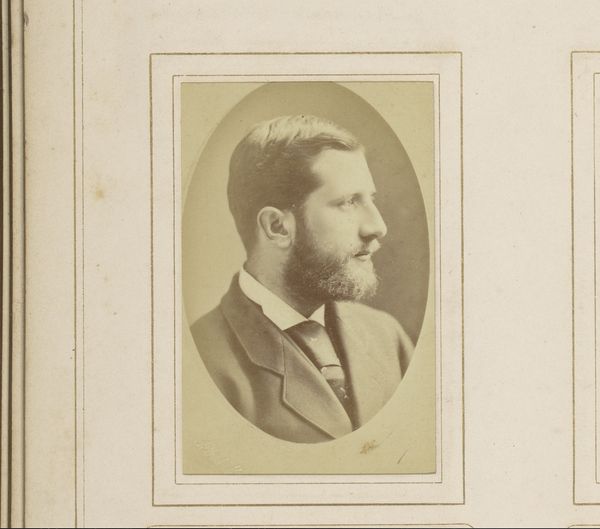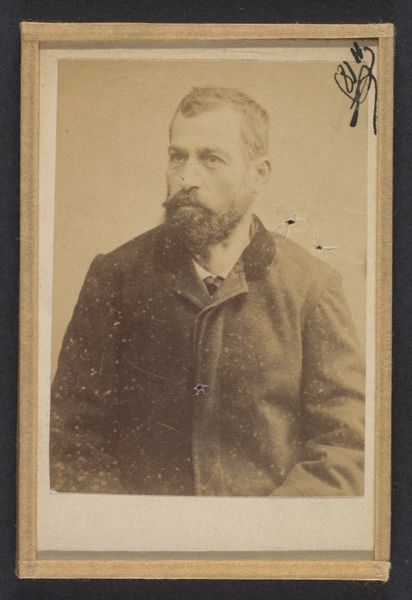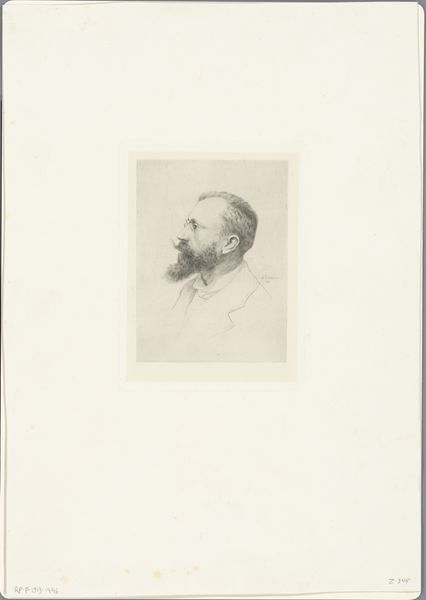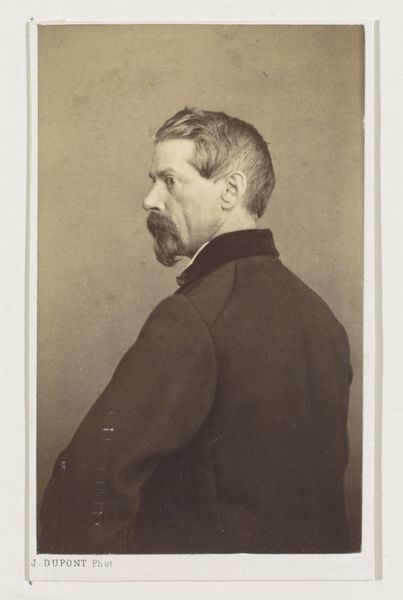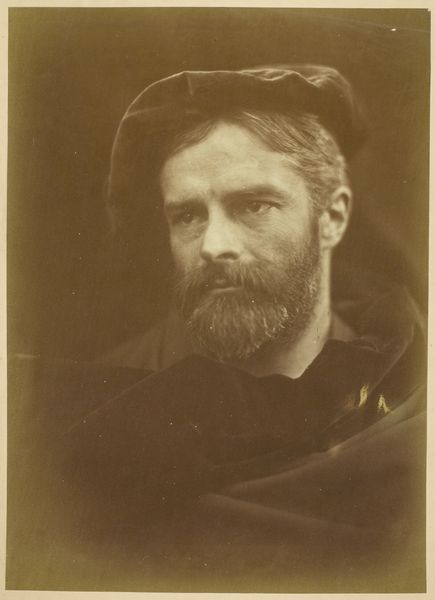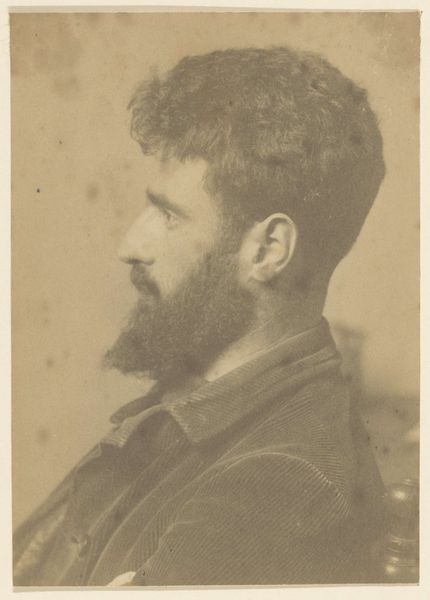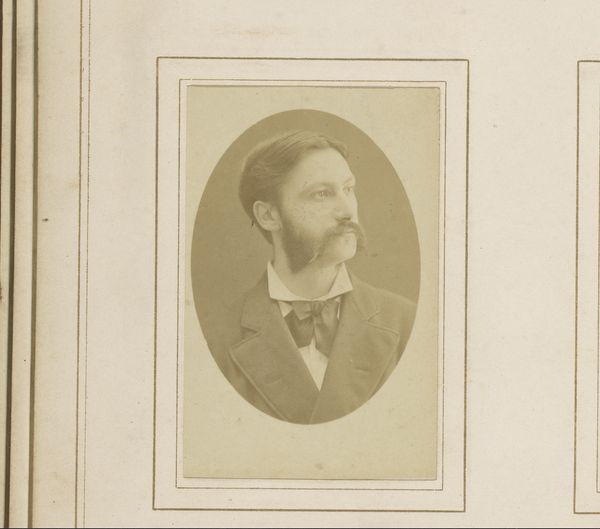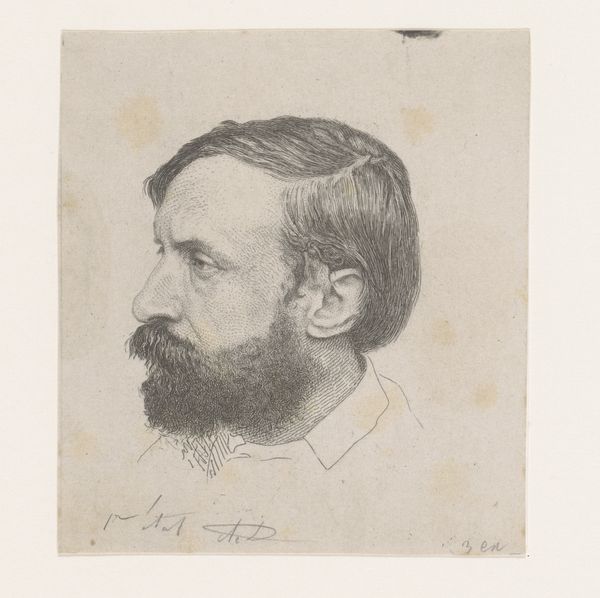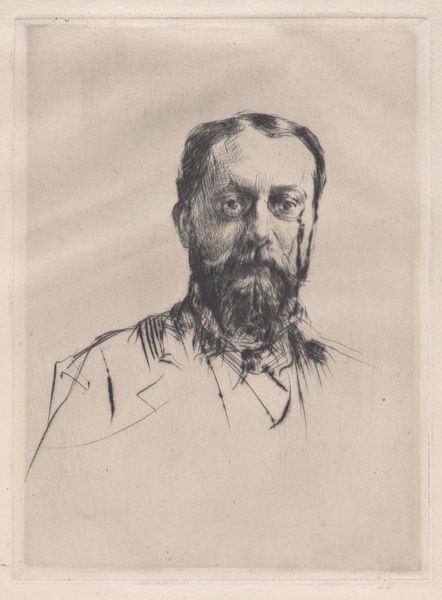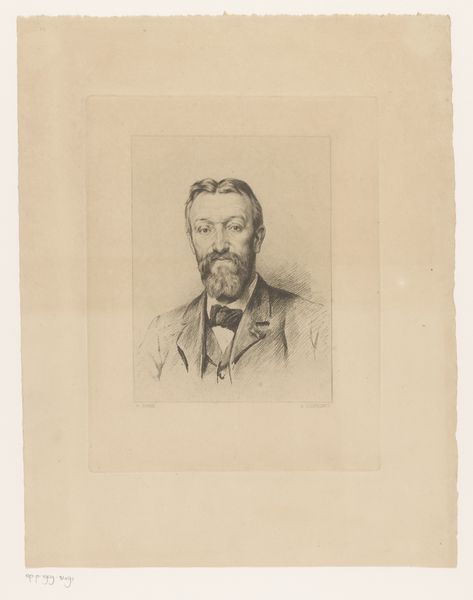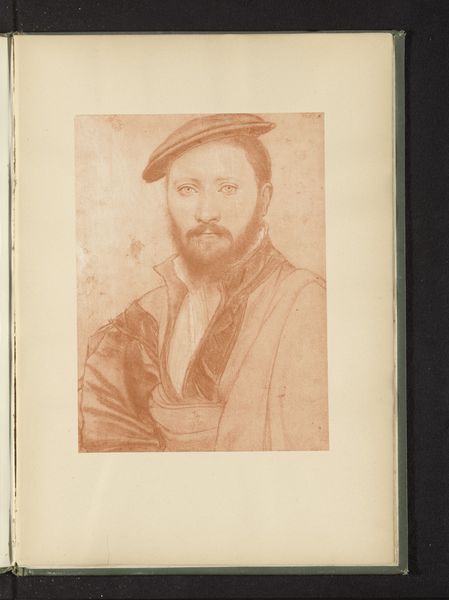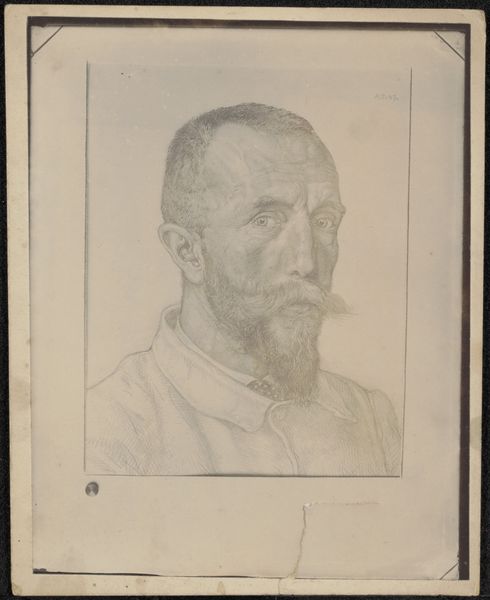
Dimensions: Image: 30.4 x 25 cm (11 15/16 x 9 13/16 in.) Mount: 40.9 x 30.6 cm (16 1/8 x 12 1/16 in.), irregular
Copyright: Public Domain
Curator: Here we have Julia Margaret Cameron's photograph, "Philip Stanhope Worsley," a gelatin-silver print from 1866. It resides here at the Metropolitan Museum of Art. What strikes you about it? Editor: There's such a raw intimacy, isn't there? Like a fleeting moment captured in amber. That blurry focus feels deliberate, adding a kind of dreamlike quality to the subject's intense gaze. Curator: Cameron was quite intentional about embracing the imperfections of the photographic process. Her use of soft focus, scratches, and chemical stains challenge the smooth, polished aesthetic of much commercial photography at the time. She saw those "flaws" as crucial in achieving artistic expressiveness. Editor: It does feel rebellious! You can almost see the photographer experimenting with light, texture. The deep blacks are heavy, really contrast that little of lighter area across his shoulder and cheek, it directs the focus. Curator: It is heavy. Thinking about the social context is key. Cameron had access to resources – a darkroom, models – because of her privileged position. Her practice blurred lines between art and craft while it cemented class boundaries, even while appearing "revolutionary" at the time. Editor: Yes! The romantic gaze feels filtered, mediated. He feels posed but trying to act as if not? Yet the sitter, Worsley, the poet, seems vulnerable somehow, too, caught in her lens... What do you think he made of the portrait? Did he consider his representation idealized or unflattering, a 'true' depiction? Curator: Considering Victorian ideas about masculinity and presentation, I wonder if Worsley would see this treatment of blurriness and direct contact with his gaze as too raw. These portraits, circulating amongst elite circles, were ways to create and reinforce identity and networks, so a 'flawed' or revealing portrait might be interpreted differently. Editor: That friction – between her vision, his self-presentation, the Victorian public’s gaze– is compelling and timeless, right? Like a blurred mirror reflecting shifting social ideas through a highly manipulated artistic filter. Curator: Exactly! A fascinating play of production, materiality, social practice and artistry frozen on silver. Editor: It's a reminder of art's uncanny ability to be simultaneously deeply personal and profoundly shaped by the world around it. A blurry window into a very specific time.
Comments
No comments
Be the first to comment and join the conversation on the ultimate creative platform.
